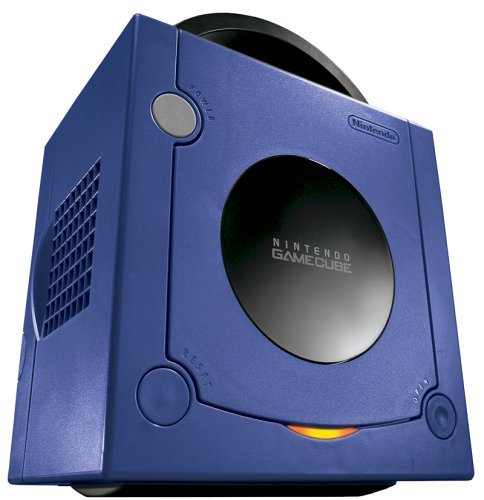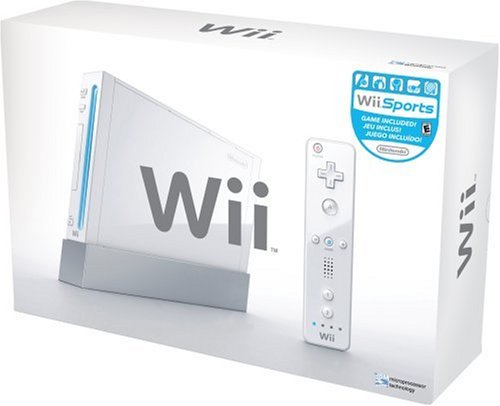Unlike other entertainments, video games can bring individuals from all walks of life together. When people participate in any play, they need to adopt a new perspective that they may not be comfortable with. Video games have now become the vehicle for this true, collaborative play. It broadens viewpoints and creates new communities by bringing in individuals who might not have met.
The average player now has 14 years of experience. They’ve grown up with the industry and watched it change. The communities that play video games have grown deeper, fuller, and more well-rounded. Those communities are just getting more inclusive and accessible.
The console features games and programs that give expert users or developers access to unique capabilities. It is a place to execute commands. The console is best by pressing the tilde key while the game or application is running if one is available. This article’s current focus is on the GameCube and Wii. Let’s look at how they differ and their similarities and best characteristics.
| Specifications | GameCube Indigo | Nintendo Wii |
| ASIN | B00005QEFF | B0009VXBAQ |
| Release Date | November 18, 2001 | November 19, 2006 |
| Best Seller Rank | #34,924 in Video Games | #7,460 in Video Games |
| Product Dimension | 9.75 x 5.5 x 9.75 inches; 4.5 Pounds | 15 x 10 x 4.5 inches; 7.5 Pounds |
| Item Weight | 4.5 pounds | 7.5 pounds |
| Manufacturer | Nintendo Games | Nintendo |
| Date First Available | November 24, 2005 | July 11, 2005 |
GameCube Review
Nintendo’s GameCube seemed satisfied to pander to its traditional fan base. The younger market, with Microsoft’s Xbox aimed at a mature age and Sony’s PlayStation 2 dominating the mainstream. Because of its indigo color scheme and huge plastic handle, this cube-shaped console appears to be a Fisher-Price Toy. The Gamecube, on the other hand, was virtually as powerful as the Xbox on the inside. It may have a technical advantage over the PS2. The use of small proprietary disks rather than DVDs was one design oddity.
Unlike the Xbox, the GameCube does not have an internal hard drive. It does not appear to be getting one very soon. Instead, you’ll need to purchase additional memory cards to save your game progress. Although no card is provided, we enjoyed the one accessory with the system. The bundled controller fits comfortably in large and little hands and handles nicely.
GameCube
We considered the GameCube to be a little short on a feature-by-feature basis. However, games will eventually sell any system, and GameCube is ready for casual players’ families in this regard. Given Nintendo’s history of franchise characters. Pokemon, Legend of Zelda, and Super Mario Brothers are just a handful of games that will delight any child. It doesn’t hurt that Spyro and Crash Bandicoot have also made their way to the system.
Also, with Metroid Prime, one of the best games on any console, Nintendo now has a significant winner. More high-quality titles are important, but for now, there’s plenty here to convince some gamers to buy the GameCube. In comparison, first-party GameCube games of the time were underwhelming. Wind waker today is one of the most classic games in its era, but fans are not into it. On the other hand, according to gamers, Super Mario Sunshine is the worst series game.
It isn’t easy to choose only three of the console’s top games. Countless games stand out as console greats as soon as you start going through the GameCube’s library. Before Xbox Live Arcade is popular, the Viewtiful Joe introduction gathers some modern production standards for a 2D side-scroller. The Eternal Darkness: Sanity’s Requiem is one of the best horror games ever.
Wii Review
Those who anticipate their next-generation gaming systems to be large and cumbersome (like the Xbox 360 and PS3) will be pleasantly surprised when they see the Wii in person. The system is substantially smaller than either the Xbox 360 or the PlayStation 3. Although not as small as a slimline PS2, the Wii is small and discreet enough to fit into most living rooms. The Wii, like the Xbox 360, can be stored flat or on its side. Nintendo has included a customized grey stand that allows the Wii to sit at an attractive angle for those who wish to store their Wii sitting up.
In Australia, the unit is only available in pearl white. The Wii’s smooth body is rather appealing, and it has a lot nicer finish than the Xbox 360’s off-white finish. The majority of the unit’s surface is free of debris. The disc loading slot is on the front of Wii and glows a lovely shade of blue, inside and out. The buttons on top consist of power and reset buttons, while the eject button is on the bottom. You may remove a hidden panel along its edge to reveal the Wii’s SD card slot and a controller button.
Nintendo Wii
The controller was the Wii’s most prominent feature. The Wii Remote, or Wiimote, was a portable controller that served as a motion controller and a gamepad. This Remote employed an optical sensor to track the controller’s operation. The Wii MotionPlus adds further motion-detecting capabilities to future versions of the controller. The Wii Remote Plus was a second sensor package mounted to the bottom of the controller. You can also incorporate it into the device.
The Wii was substantially smaller than typical gaming systems. The Wii, when positioned vertically with the supplied stand, measures a compact 6.2 x 1.7 x 8.5-inches. The system contained a slot-loading optical drive on the front. It also contains two USB 2.0 connections, a proprietary AV port, a Wii Sensor Bar connection, and a power connector. A covered port selection supported several Nintendo GameCube devices in early Wii systems. However, they deleted this in later Wii versions.
The Wii was a condensed version that omitted the now-defunct Wi-Fi connectivity and accompanying online functionality, allowing physical disc gameplay. There’s no difference with the functional features between the Wii models these days because that’s all you’re receiving.
The Key Difference Between These Two Console
Nintendo’s Wii and GameCube consoles feature Mario, Donkey Kong, and other well-known video game characters. The difference is their age, with the GameCube being the Wii’s predecessor. The Gamecube has been out of production since 2003, and no fresh units or games are available. The Wii is still Nintendo’s most recent console, with many games and many more anticipated ones.
The GameCube is substantially larger than the Wii in size, as it was designed to resemble a cube. The Wii is a considerably smaller tower that relies on its base to stand upright. The Wii’s sleekness is further enhanced by wireless controllers, which allow all cords to be conveniently hidden behind the console. The Gamecube has four controller ports on the front. The wires can get tangled if you don’t remove the controllers after each game.
Finally, unlike the Gamecube, Nintendo has abandoned the smaller 80mm discs in favor of regular 120mm discs with the Wii. Larger CDs carry more data, reducing the need to split games across numerous discs or compress movies unnecessarily.
Similarities Between the Two Consoles
Both deliver high-quality gameplay for you to enjoy. But GameCube has a way to join the fun in the Wii community. GameCube controllers are compatible with the Nintendo Wii. The console natively supports them, and there are even specialized ports. All you’ll need is a Nintendo Wii console and a GameCube controller to get started!
The $20 GameCube Controller Adapter, as it’s officially known, was released alongside Super Smash Bros. for Wii last November 21. It plugs into the system and provides four controller ports. Most of us will use it to play the highly anticipated four-player fighting game. You may also use it to play Super Mario 3D World or Mario Kart 8. Because the adapter is compatible with any game that uses Nintendo’s standard controller settings, you can use it with games.
Best Use of Each Console
The GameCube’s compatibility with the Game Boy Advance handheld console device was one of the console’s most unique features. People may use a “link cable” to connect their GBA to the GameCube. It allows them to access special in-game features by using the handheld as a second controller and screen. No other system had this level of functionality, and it propelled GameCube in some exciting new directions.
After its release, those who purchased a Wii were offered a bonus in the form of a free game. Wii Sports is a game that puts users in the shoes of their Miis using the Wii’s motion controls. Each activity had a distinct technique to highlight that the Wii could offer, from boxing, bowling, baseball to tennis. 1-2 Switch is an introductory game for the Switch, but they did not include it with the console. It instead costs $60 and is more like a tryout than a full-pledge game.
Which is the Winner?
Nintendo ditched the six-axis controllers seen on most consoles at the time, including the GameCube, with the Wii. They created and built a motion controller that focuses on the player’s movement rather than key inputs. This forces the gamer to get up from his seat and move around. The Wii’s relative user-friendliness is another side effect of the motion controller. Even older folks can play games like Wii Sports. They immediately pick up the mechanics because the motion is similar to the action. Most games demand complex combinations of key presses to execute maneuvers; thus, you won’t be able to do it on the GameCube.
Final Takeaway
Innovation is truly fascinating, mostly in the video game industry. They are expected to introduce new technologies, controls, and experiences. As the globe increasingly spends more on gaming consoles, streaming devices, and computers will become key revenue streams. Large IT companies will attempt to utilize their current foundation to participate. The changing demographics of gamers is perhaps the most interesting trend in the video game industry. The video game industry’s future looks bright, with more people playing games. It creates a desire for more immersive entertainment and looks for better ways to access games.
Product Fight reviews the best technologies, televisions, gadgets, and experiences. Here’s a wonderful place to start if you want to get a more hands-on viewpoint.
FAQs
1.) Why was the GameCube a failure?
The downfall of the GameCube was due to time and competition. The GameCube was released right before the first Xbox and a year before the PlayStation 2. In the end, GameCube couldn’t stand up to the rivalry between these two strong consoles.
2.) Why did the Wii fail?
Some consoles, such as the PlayStation 2, have enough traction to last until its successor arrives. But the Wii’s traction has been eroded by years of third-party neglect and shovelware.
3.) Why is GameCube unique?
GameCube wasn’t the first to introduce the use of memory cards. It was the first to introduce the concept of several memory cards. Ranges in size from two to eight megabits, allowing users to save many games for their consoles at the time.
4.) Why is Wii unique?
The first wireless gaming console, Wii, is the first system to have a wireless controller. In comparison to its competition, the Wii Remote is unique. Wii Remote connects to the console via Bluetooth rather than a cable because it no longer utilizes one.
5.) Why is gaming addictive?
Dopamine is released by the brain’s reward center in reaction to a pleasurable event or hyperarousal. When hyperarousal occurs during playing video games, the brain correlates the activity with dopamine release. The individual develops a strong desire to seek out the same pleasure repeatedly.







